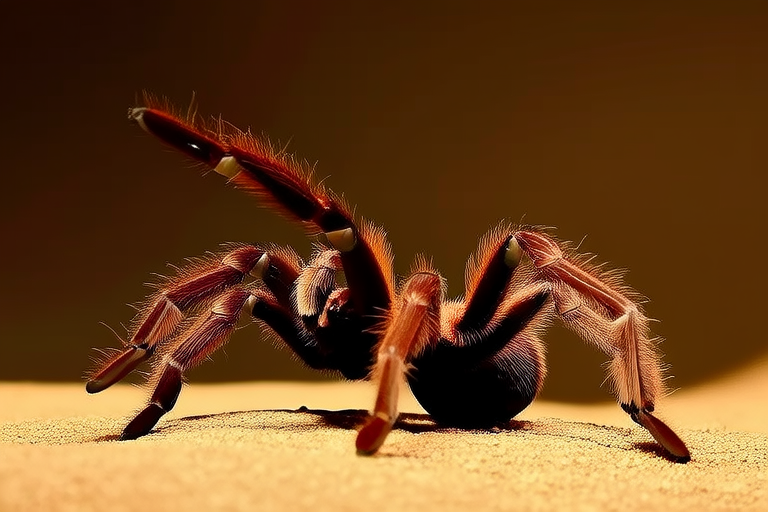Chilean Rose Tarantula: The Ideal Beginner’s Spider Companion
Welcome to the fascinating world of exotic pets! Among the diverse array of creatures that captivate pet enthusiasts, the Chilean Rose Tarantula stands out as a particularly popular choice, especially among beginners. Known for its vibrant pink hue when young and its relatively docile nature, this tarantula species has gained a reputation as one of the best starter spiders. In this comprehensive guide, we will explore why the Chilean Rose Tarantula is an ideal companion for those new to the hobby, delving into its physical characteristics, care requirements, and more.
Introduction: Popularity and Suitability for Beginners
The Chilean Rose Tarantula, scientifically named Grammostola rosea, is a ground-dwelling tarantula native to the deserts and scrublands of Chile. Its popularity stems from several factors: ease of care, affordability, and a generally calm demeanor that makes it approachable even for those with little experience. These spiders are often recommended for beginners because they require minimal maintenance and can thrive in captivity with the right setup. Additionally, their docile nature reduces the risk of bites, making them safer to handle compared to other species.
Physical Characteristics
One of the most striking features of the Chilean Rose Tarantula is its coloration. Juveniles have a distinctive pink hue, which gradually fades to a brownish-gray as they mature. Their legs are covered in fine hairs, which they can release if threatened, causing irritation in predators. Adult females can reach lengths of up to 4.5 inches, while males are slightly smaller. Both sexes possess eight eyes arranged in two rows but rely more on vibrations than sight for navigation. Their robust bodies are well-suited for digging burrows, where they spend much of their time.
Temperament and Care Requirements
Chilean Rose Tarantulas are known for their calm and docile temperament, which contributes significantly to their appeal as beginner-friendly pets. They are not aggressive and rarely bite unless provoked. However, it’s important to remember that any bite from a tarantula, including this species, can cause pain and irritation. Proper handling techniques minimize the risk of provocation.
Care requirements for these spiders are straightforward. They need a terrarium equipped with substrate for burrowing, hiding spots, and a water dish. The enclosure should be spacious enough to allow movement but not so large as to make it difficult for the spider to find its way back to its burrow. A temperature range between 75°F and 85°F (24°C to 29°C) is optimal, along with humidity levels around 60%. Regular cleaning and monitoring of environmental conditions ensure the spider remains healthy.
Feeding Habits
Feeding a Chilean Rose Tarantula is relatively simple. In the wild, they primarily feed on insects like crickets, grasshoppers, and small lizards. As pets, they can be fed appropriately sized crickets or mealworms once or twice a week. It’s crucial to gut-load feeder insects with nutritious foods before offering them to the spider to enhance its diet. Avoid overfeeding, as obesity can lead to health issues.
Housing Needs
Creating a suitable habitat for your Chilean Rose Tarantula involves providing a secure environment that mimics its natural desert setting. The terrarium should have at least three inches of substrate, such as coconut fiber or bark, allowing ample space for burrowing. Add cork bark or similar structures as hiding spots. Ensure there are no gaps through which the spider could escape. Regularly check the enclosure for cleanliness and signs of wear to maintain safety.
Tips for Handling
Handling your Chilean Rose Tarantula requires patience and gentle care. Always wash your hands before and after interacting with the spider to avoid transferring oils or chemicals. Use a soft brush to coax the spider out of its burrow gently. Once outside, hold the spider by supporting its abdomen rather than grabbing its legs. Keep interactions short and infrequent to reduce stress on the animal.
Common Health Issues and Prevention
Like any pet, Chilean Rose Tarantulas can face health challenges. Common issues include mites, which can be prevented by quarantining new acquisitions and maintaining clean enclosures. Regulating temperature and humidity also helps prevent respiratory problems. Signs of illness may include lethargy, loss of appetite, or unusual behavior. Consulting with an experienced veterinarian specializing in exotic animals can provide guidance on diagnosis and treatment.
Where to Acquire Responsibly
Acquiring a Chilean Rose Tarantula responsibly involves purchasing from reputable breeders or pet stores. Avoid sourcing from unknown sellers or online platforms without proper reviews. Reputable sources prioritize the welfare of their animals and provide detailed information about care instructions. Additionally, consider adopting from rescue organizations that specialize in exotic pets.
In conclusion, the Chilean Rose Tarantula offers an exciting entry point into the world of exotic pet ownership. With their attractive appearance, manageable care requirements, and friendly disposition, these spiders make excellent companions for novice enthusiasts. By understanding their specific needs and following best practices, you can ensure a rewarding experience with your new arachnid friend.
